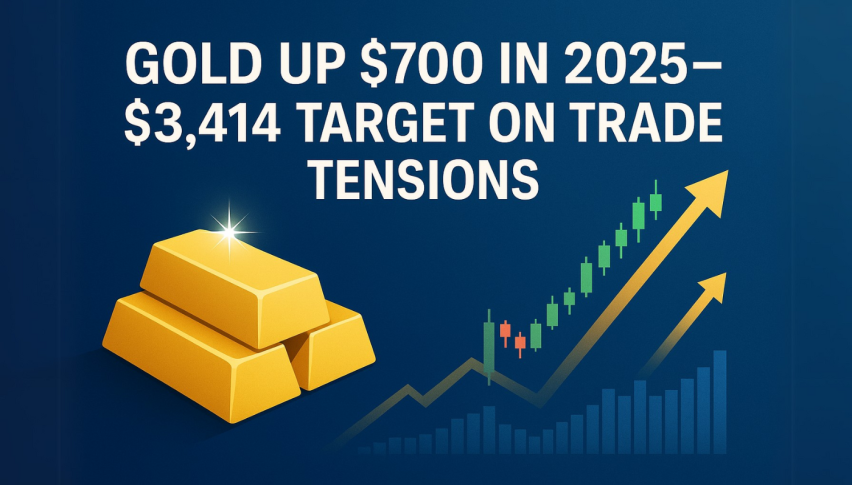Gold Price Within Reach of $2,200 After the Mixed NFP Numbers
The Gold price has been extremely bullish in recent months, and today it made another jump after the NFP report

The Gold price has been extremely bullish in recent months, and in the last two weeks, it has been absolutely surging as markets expect the FED to start cutting interest rates at some point. Today the NFP report displayed some mixed figures, which kept the uncertainty elevated and gave Gold another push to the upside.
Gold H4 Chart – The 20 SMA Can’t Catch Up With the Price
GOLD prices (XAU/USD) rose to a new all-time high above $2,180 in Friday’s early New York session, as 10-year US bond yields fell to 4.04% following the release of US NFP data. A severe slowdown in wage growth and a higher unemployment rate are expected to prompt market predictions that the Federal Reserve (Fed) would decrease interest rates at its June policy meeting.
February 2024 US Employment Data from the Non-Farm Payrolls Report
- February non-farm payrolls: +275K (versus an expected +200K), indicating strong job growth.
- Prior non-farm payrolls: Revised from +353K to +229K.
- Two-month net revision: -167K (compared to a prior revision of +126K).
- Unemployment rate: 3.9% (versus an expected 3.7%), showing a slight increase from the previous rate of 3.7%.
- Participation rate: 62.5%, unchanged from the prior month.
- U6 underemployment rate: 7.3% (versus a prior rate of 7.2%).
- Average hourly earnings (month-over-month): +0.1% (versus an expected +0.3%), indicating slower wage growth compared to the previous month’s revised figure of +0.5%.
- Average hourly earnings (year-over-year): +4.3% (versus an expected +4.4%).
- Average weekly hours: 34.3 (in line with expectations).
- Change in private payrolls: +223K (versus an expected +160K), showing strong growth in the private sector.
- Change in manufacturing payrolls: -4K (versus an expected +10K), indicating a decline in manufacturing jobs.
- Household survey: +63K (compared to a prior figure of -31K).
- Birth-death adjustment: Not specified in the provided data.
The 4.3% year-over-year increase in US wages aligns with normal trends when considering productivity. Additionally, the index of aggregate weekly payrolls for private-sector workers, which encompasses hiring, wages, and hours, has risen by 5.3% over the past 12 months.
This suggests that wage growth is returning to pre-pandemic levels. Concerns arose last month over a significant 0.6% month-over-month rise in average hourly earnings, but this has since been revised lower. It appears that the initial increase was skewed by a one-off drop in hours worked, highlighting the importance of considering broader measures of wage inflation for a more accurate assessment of economic trends.
Gold Live Chart
- Check out our free forex signals
- Follow the top economic events on FX Leaders economic calendar
- Trade better, discover more Forex Trading Strategies
- Open a FREE Trading Account




